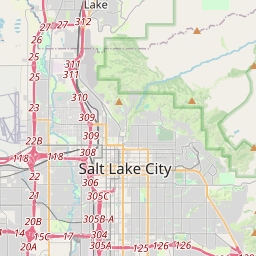Inscription
A Moment in Time.Running as fast as the mustang pony could run, Pony Express riders raced across nearly 1900 miles of wilderness carrying the U.S. Mail between St. Joseph, Missouri, and Sacramento, California. With nostrils flaring, lungs gasping for air, and muscles burning every ounce of energy the pony could muster, horse and rider climbed over mountains, crossed dry deserts, and forded rivers and streams through cold of winter, heat of summer, and threat of life—setting a delivery record unsurpassed by anything else in the early 1860s. The legend of the "pony," a race against time and a test of extreme endurance, quickly found a place in the hearts and emotions of Americans that still lives today.
Carefully study the genius of the Avard Fairbanks' Pony Express Monument. Fairbanks sculpture is a study in contrasts that captures a moment in history while symbolizing the interdependency of generations - the rider depending on the station keeper to be there for him as the younger generation depends on the older one and the older generations bidding farewell to the younger—an interdependence uniting young and old, and man and beast.
Dr. Fairbanks believes that great sculpture comprises the mastery of four elements—anatomy, action, balance, and rhythm. He used these to contrast the vigor of the fresh horse versus the fatigue of the spent horse, the excitement of the youthful rider charging off (his foot barely in the stirrup) versus the solidarity of the old station keeper who kept the horse waiting and bids "Godspeed" to the rider as he gallops away.
Carefully study the genius of the Avard Fairbanks' Pony Express Monument. Fairbanks sculpture is a study in contrasts that captures a moment in history while symbolizing the interdependency of generations - the rider depending on the station keeper to be there for him as the younger generation depends on the older one and the older generations bidding farewell to the younger—an interdependence uniting young and old, and man and beast.
Dr. Fairbanks believes that great sculpture comprises the mastery of four elements—anatomy, action, balance, and rhythm. He used these to contrast the vigor of the fresh horse versus the fatigue of the spent horse, the excitement of the youthful rider charging off (his foot barely in the stirrup) versus the solidarity of the old station keeper who kept the horse waiting and bids "Godspeed" to the rider as he gallops away.
Details
| HM Number | HM9G |
|---|---|
| Series | This marker is part of the Pony Express National Historic Trail series |
| Tags | |
| Marker Condition | No reports yet |
| Date Added | Friday, October 10th, 2014 at 11:48am PDT -07:00 |
Pictures
Locationbig map






| UTM (WGS84 Datum) | 12T E 430781 N 4511582 |
|---|---|
| Decimal Degrees | 40.75228333, -111.81996667 |
| Degrees and Decimal Minutes | N 40° 45.137', W 111° 49.198' |
| Degrees, Minutes and Seconds | 40° 45' 8.22" N, 111° 49' 11.88" W |
| Driving Directions | Google Maps |
| Area Code(s) | 801 |
| Closest Postal Address | At or near 2423-2599 E Sunnyside Ave, Salt Lake City UT 84108, US |
| Alternative Maps | Google Maps, MapQuest, Bing Maps, Yahoo Maps, MSR Maps, OpenCycleMap, MyTopo Maps, OpenStreetMap |
Is this marker missing? Are the coordinates wrong? Do you have additional information that you would like to share with us? If so, check in.
Nearby Markersshow on map
Show me all markers in: Salt Lake City, UT | Salt Lake County | 84108 | Utah | United States of America
Maintenance Issues
- What historical period does the marker represent?
- What historical place does the marker represent?
- What type of marker is it?
- What class is the marker?
- What style is the marker?
- Does the marker have a number?
- What year was the marker erected?
- Who or what organization placed the marker?
- This marker needs at least one picture.
- Can this marker be seen from the road?
- Is the marker in the median?

Comments 0 comments